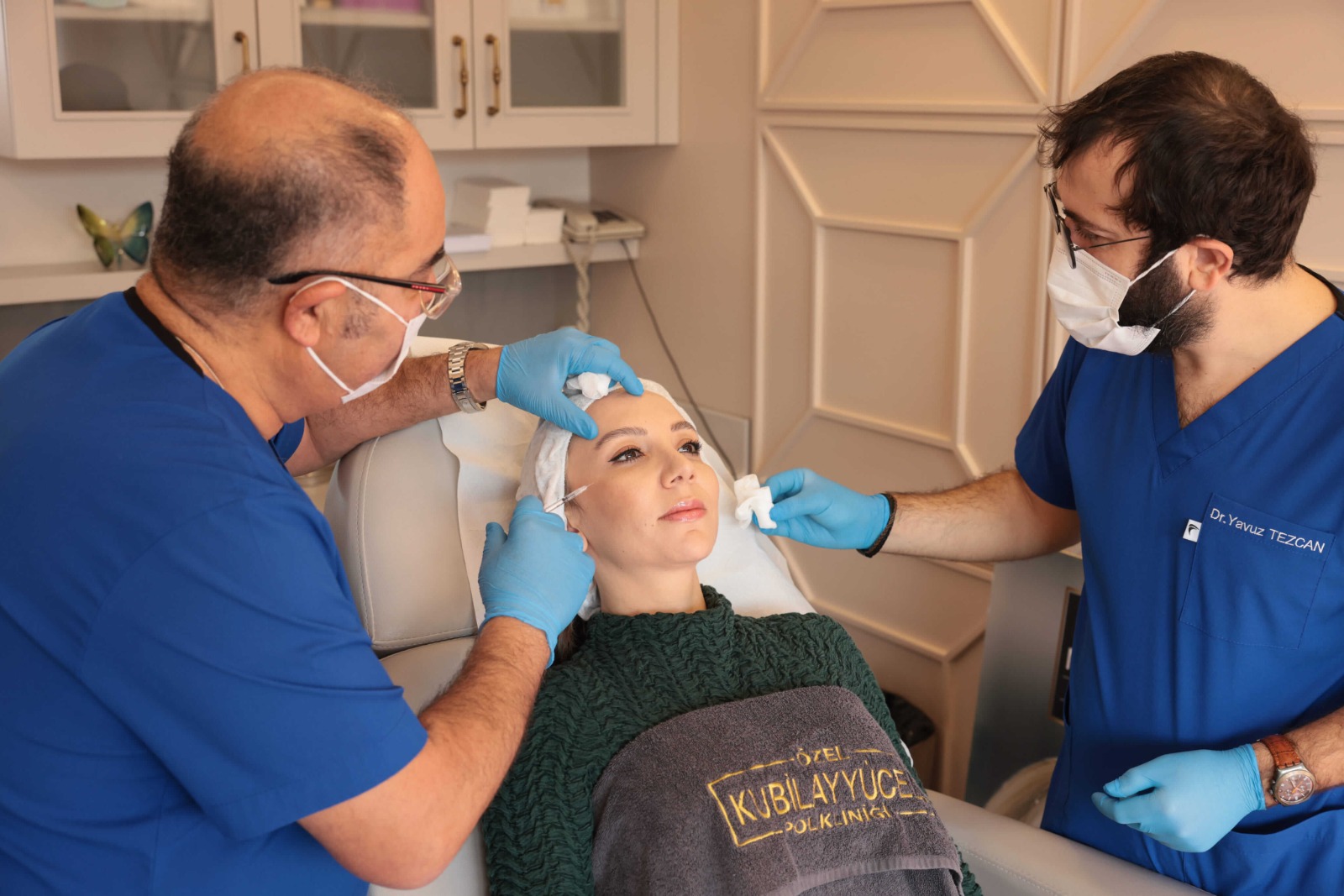Skin filler is a non-surgical aesthetic treatment that adds volume beneath the skin, reduces wrinkles and fine lines, contours facial features, and restores lost elasticity. The most commonly used fillers include substances such as hyaluronic acid, calcium hydroxyapatite, or polycaprolactone. These substances provide natural fullness and firmness, resulting in a more youthful appearance. Additionally, they help maintain the skin's moisture balance, contributing to a healthier and more vibrant look.
Areas Treated with Skin Filler
- Facial Contouring: Contouring of the cheeks, chin, jawline, and cheekbones for more defined and proportionate facial features.
- Wrinkles and Lines: Treating forehead lines, perinasal folds (nasolabial folds), and fine lines around the mouth. Both fine wrinkles and deeper lines are softened to achieve a more youthful expression.
- Lip Augmentation: Enhancing lip volume and smoothing fine lip lines to create fuller, more defined, and attractive lips.
- Under-Eye Bags: Reducing under-eye hollowness for a more youthful look. Under-eye fillers help diminish a tired appearance.
- Volume Loss in Hands: Minimizing age-related volume loss and signs of aging in the hands. The filler reduces the appearance of prominent bones and veins for a more youthful, smooth look.
- Individuals experiencing volume loss in the face and seeking a youthful appearance,
- Those wanting to enhance their lips,
- Those looking to define their facial contours,
- Those aiming to reduce the appearance of wrinkles.
Skin filler is a minimally invasive procedure, making it an ideal option for those with busy work or social lives. However, it may not be suitable for everyone, so consulting a specialist before the treatment is recommended.
- Natural Results: Achieve a natural appearance with well-contoured features. With proper planning and the correct dosage of filler, the results are subtle and balanced.
- Quick and Safe: The procedure is fast, typically taking 15-30 minutes, with minimal side effects, allowing a quick return to daily activities.
- Long-Lasting Effects: Depending on the filler used, the effects can last between 6 months and 1 year. Regular treatments may extend these benefits.
- Non-Surgical Procedure: It does not require incisions, sutures, or general anesthesia, ensuring a smoother recovery process.
-
Assessment: The specialist evaluates your facial features and determines the areas that require filler. Factors such as skin texture, wrinkle depth, and facial proportions are considered.
-
Injection: The filler is injected under the skin using fine needles. If necessary, local anesthetic creams may be applied to minimize discomfort during the procedure.
-
Recovery: You can return to your daily routine immediately after the procedure. Temporary redness or swelling may occur but typically subsides within a few hours. For faster recovery, avoid strenuous activities and massages for the first few days.
When Are the Results Visible?
The effects of skin filler are noticeable immediately. After the procedure, your facial features appear more defined and youthful. Full results typically become clear within 1-2 weeks as the filler integrates naturally with the skin.
- It is recommended to avoid massages and excessive facial expressions after the procedure to prevent any unwanted migration of the filler.
- Protecting the treated area from the sun can help prevent swelling and bruising. It is especially advised to use high-SPF sunscreens during the first few days.
- Mild sensitivity in the treated area may persist for a few days, but it will subside over time. Drinking plenty of water and maintaining a healthy diet can support the skin's rejuvenation process.
Skin filler is an effective method for achieving natural rejuvenation without surgical intervention. Thanks to biocompatible substances such as hyaluronic acid, it helps maintain the skin's moisture balance, resulting in a healthier and more vibrant appearance. Since each individual's skin is unique, it is crucial to consult with a specialist dermatologist or aesthetic surgeon before the procedure to develop a personalized treatment plan and achieve the best possible results.

